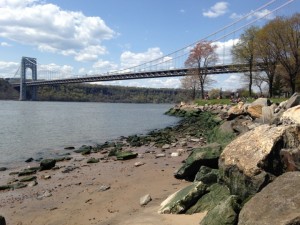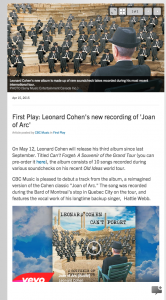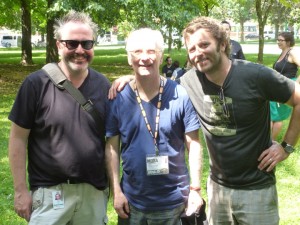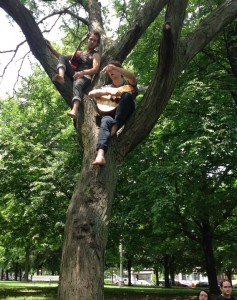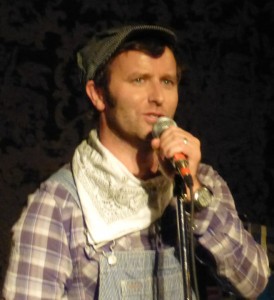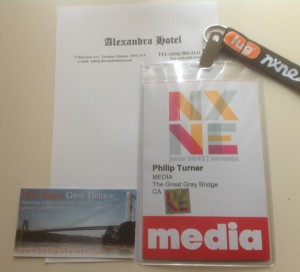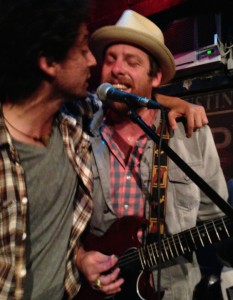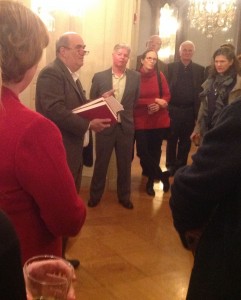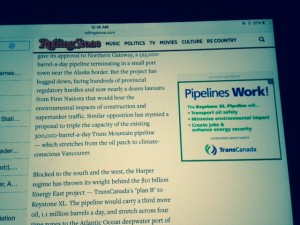First Night of NXNE 2015, Great Start to a Favorite Urban Festival
During this year’s NXNE, Toronto’s great music festival, Honourary Canadian will be publishing guest posts by my friend Regina Sienra, aka Reginula, a music journalist who hails from Mexico City. She’s a stalwart fan of Canadian indie music, and has been recognized by the CBC Radio 3 community as our Fan of the Year. Below is a shot of Regina (l.) with CBC Radio 3 host Lana Gay. You can follow Regina on Twitter and Instagram where her handle is @Reginula. From one honourary Canadian to another, I’m delighted to be publishing her work here—Philip Turner. 
The 2015 edition of NXNE kicked off slowly, but in an extremely powerful way. After some major changes on the administrative side, Northby got rid of the Interactive section, changed the ticketing deal—now some special shows require an extra ticket—and added several new venues to their roster, including a new NXNE hub (bye, bye awkward process at the Hyatt) at the intersection of Queen and Spadina, near where much of the festival action happens at legendary venues like the Horseshoe Tavern, the Rivoli, and Cameron House.
As usual, it’s not common to see the big names on the first day of the schedule, but this doesn’t mean one can’t bump into old favorites and make great new discoveries.
The Royal Foundry is definitely among the latter category, an exciting discovery for me. Hailing from Edmonton, this duo is comprised of Jared and Bethany, a couple married for about 18 months and a musical ensemble for about twice that span. They recently won the Northern Alberta region of CBC Music’s Searchlight contest, and though it’s just the two of them on stage, they are a force of nature producing mesmerizing upbeat folk filled with romantic lyrics. Despite the early hour for the show (8pm) and the small venue, the crowd was very engaged by the duo’s performance (Thanks to @shonicar3 for use of her Instagram picture of Royal Foundry).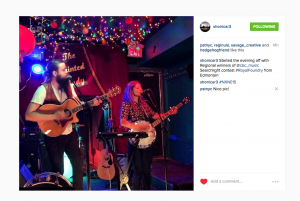
Back on Spadina and Queen at the Horseshoe Tavern for a 9pm set, I enjoyed hearing Girlfriends and Boyfriends who brought their heavily influenced ’80s rock east from Vancouver. They play a rather different musical genre than what’s currently coming out of the west coast scene. It was a fun warm up for the powerful bands that would hit the stage later.
A more roots option was available a few steps down Queen Street at the Rivoli, with NQ Arbuckle, front man of a perennially popular local alt-country outfit, and a favorite of CBC host Tom Power. NQ (stands for Neville Quentin) delivered a set full of hits and emotion, as he and his great band have done for many years. His banter was filled with stories about the songs, the set was perfect to take a seat and get ready for what was about to unfold over the next couple sets of live music. (Thanks to @shonicar3 for use of her Instagram picture of NQ and gang).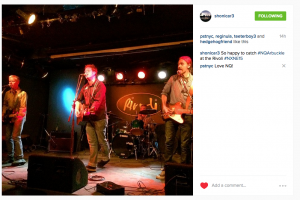
Moon King, local wonder praised by international media, was one of the biggest names of the night, fulfilling everyone’s expectations of what powerful and intense shoegaze rock sounds like. Daniel Benjamin and Maddy Wilde were joined by a bassist and a drummer in a set only a bit longer than thirty minutes that left everybody hungry for more from them.
Greylands, a garage rock side project of Cuff the Duke’s Wayne Petti was the option I chose to say goodnight to the first night of NXNE, with no mellowing down required. Mind-numbing distortion is put on the spotlight during Greylands sets, which is completed by Petti’s actions on and off stage, throwing his guitar away and hitting it against a monitor to create even more distortion. For those curious about this band, they will play again during Paper100, a highlight of the NXNE schedule, celebrating the work of Paperbag records. I’m eager to for Day II!

